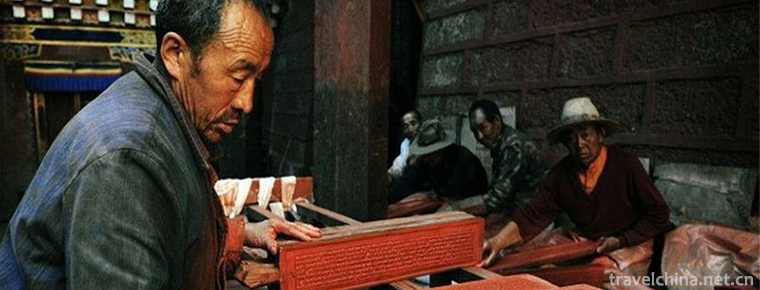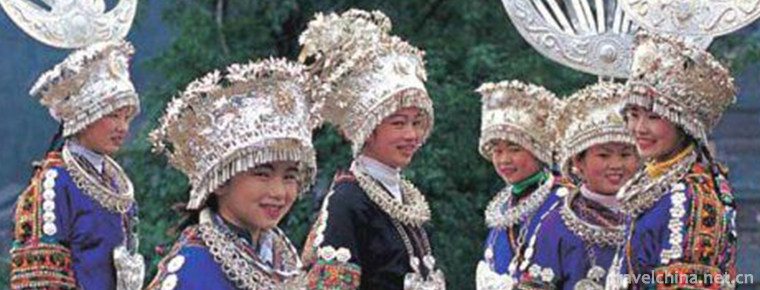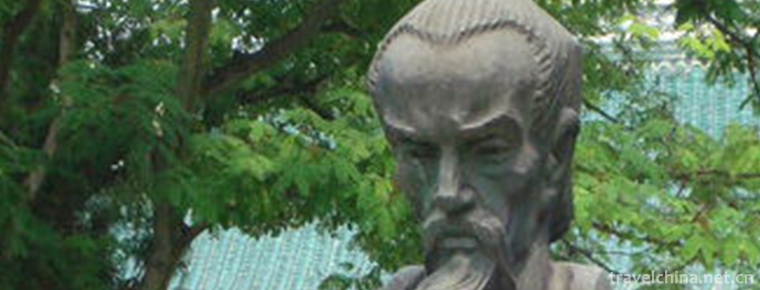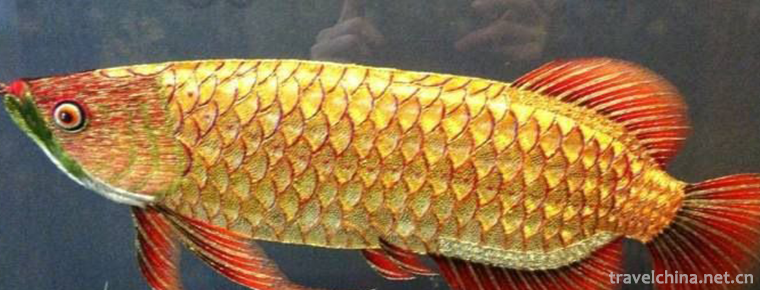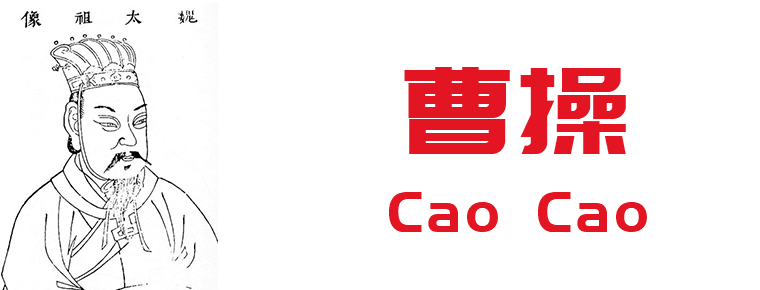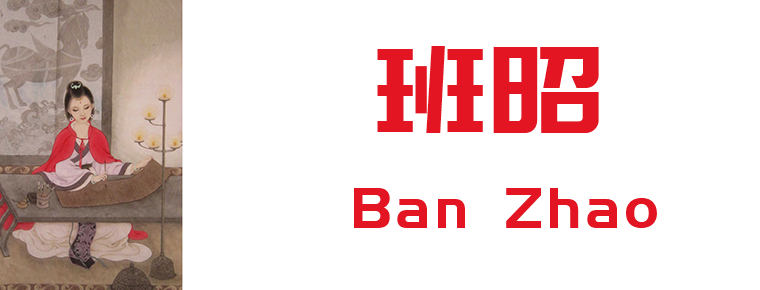Rob Village
Rob Village
Located 35 kilometers southwest of Yuli County, Luobu Village is 85 kilometers south of Korla City. The village covers 72 square kilometers and has more than 20 families. It is one of the largest villages in Western China. It belongs to Jongkule Ranch and is a paradise inhabited by Rob people. The village covers the Taklimakan Desert, migrating lakes, Tarim River, primitive poplar forest, grassland and Rob people. The largest desert, the longest inland river, the largest green corridor and the Silk Road intersect here, forming a golden natural landscape.
Ecotourism Area
In 2000, "Rob Village Eco-Scenic Tourism Area Planning" and "Keyan" were approved by the Planning Committee of the Autonomous Region; in 2001, "Rob Village Environmental Assessment Report" was approved by the Environmental Protection Bureau.
The whole tourist area is divided into ten scenic spots (gardens). The first is Rob people's Folk Culture Village area (including Rob people's village area, Rob people's residence area, Rob people's fishing area, Rob people's sheep area, folk custom exhibition area, restaurant area, shopping area, leisure area and Hotel Villa area); the second is desert tourist area (including camel-riding sightseeing area, desert hiking area, sand sliding power umbrella, desert). Car recreation area, beach volleyball sport area and sand treatment area; 3) Goddess Lake tourist area (including Crescent Lake swimming pool, Goddess Lake fishing ground, Goddess Lake heart villa area and Goddess Lake rowing, zoo and strange forest garden); 5) Sand Carving Art Park (including Silk Road Style Group, Taklimakan Legend Group, Silk Road Celebrity Group, Buddha Photo Group); 6) Desert Planting. Zoos (including ecological Memorial garden, Desert Botanical Garden and miniature landscape garden of poplar forest enclosed area); seven are wildlife parks (including South Xinjiang Wildlife Rescue Center, Precious Animal Breeding Center and Animal Liberation Ornamental Zone); eight are Silk Road National Park (36 National Architectural Gardens); nine are game grounds (including gladiatorial arenas and hunting grounds); and ten are Tarim River exploration. Dangerous tourist area. At present, 30 million cubic meters of oil and gas fields have been found 40 kilometers south of the village, and drilling has been started.
This indicates that the tourism development and construction of Rob Village will become a dazzling pearl along the Tarim River. There are a variety of primitive Populus euphratica forests, where the Tarim River and the Weigan River intersect, and the Taklimakan Desert is endless. The Rob people who rowed canoes, ate grilled fish and practiced the Lop Nur dialect grew up here. Tourists can wade rivers, cross forests, ride camels to watch the sand sea, hunt, ski sand, catch fish by boat, listen to Rob people singing folk songs, watch Rob dance around the campfire, sleep in thatched houses, enjoy the ancient Rob ethnic customs, and enjoy the pleasure of returning to nature. More and more tourists at home and abroad are attracted by the exotic customs of the Rob villages in the hinterland of the desert. At present, the 4A scenic spot in this country has formed such tourism projects as ecological sightseeing, hunting, boating, Rob people's amorous feelings tour, and has become a tourist attraction of Xinjiang, which has also led to the local economic development.
The Last Rob
Luobu people are one of the oldest nationalities in Xinjiang. They live near Xiaohaizi on the Tarim River. "They don't grow grain, they don't graze livestock, they only feed on boat fishing." Its dialect is also one of the three major dialects in Xinjiang. Its folklore, folk songs and stories all have unique artistic value. For thousands of years they have been isolated from the world, and now there are only a few "last Robs" left in the desert.
They hunt and fish at the seashore of the desert, grow crops, maintain primitive customs and habits, and their lives are full of mystery.
Rob people, also known as Rob Nur people. According to Wei Shu Tuguhun of the Northern Wei Dynasty (that is, the middle of the sixth century), "There is no enemy country for Yifu in the north of Tuguhun, and the customs are the same as Tuguhun. I don't know grain, but I only eat fish and suzi. Tuguhun lived in the northern part of Qinghai and Ruoqiang and the last part of Xinjiang, and was a member of the Xianbei nationality. The Rob people have the same customs.
Like other nomadic peoples such as Mongolian, Rob people live by water and grass. The difference is that their way of life is not to live by nomadism, but by fishing and hunting.
From generation to generation, the Rob people have lived among the isolated Haizi groups, and their enclosed living environment has created a suitable way of life. They do not grow grain, do not graze livestock, only fish in small boats for food, or gather wild hemp, or catch hush birds to peel for clothing, or otter skin and the feathers of hash birds, hold to the city to sell goods, Yibu to replace clothing (here the "city" refers to Kurla Huizhuang).
The Rob people have no concept of money, just barter. The material living conditions of the Rob people are very poor, but their adaptability is very strong. They live on the so-called "mountain-to-mountain, water-to-water". They depend on the water area of Rob Nur and the surrounding wetlands and their original Populus euphratica forest.
During the Tang Dynasty, the middle road of the Silk Road declined, and the Rob people still lived between Karakule and Zhuo Haizi. After epidemics and natural disasters, Rob settlements have been relocated to other places to settle, nomadic, and part-time farming. Only the residents of Kalquji village still retain many of the Rob people's material and cultural heritage. At the beginning of liberation, there were only a few dozen households left. The Rob people in Kalquga village love working. They are nearly seventy or eighty years old. They are still farming. Fifty-six people often gather together, carrying nets woven with wild hemp, harpoons and big sticks, and scratch cardboard basins down the lake. When fishing returns, every family in the village will take food at will and catch it again, regardless of each other.
Longevity is one of the characteristics of Rob people. Because they live in a relatively remote area of Rob Nur, far from environmental pollution, there are many centenarians. Although old-fashioned, but not deaf, eyes do not flower, clear thinking, optimistic, open-minded, bold, still can hear music and dance, indulge in singing.
The most famous Rob in history is Aldek. As the guide of Swedish Explorer Sven Heding, he led the scientific expedition team to discover the ancient city of Loulan and the cemetery of Xiaohe, which shocked the whole world. There is a memorial to Aldek in Rob Village.
The main gate of the Rob village is shaped like the head of a man in a hat, with fish totems on both sides. In the small Rob village, visitors can see four interesting people and things at the same time, namely, Rob people, Haizi, Euphrates and desert.
In fact, what we see now are all human landscapes, which are designed and constructed by professors who study Archaeology in recent years. In the past, the real life scene of Rob village can not be seen. It is said that there were only a few families living here, and each family is far away from each other. Now they have been moved away. Now it can only be said that the original village park of the restored Rob village is more appropriate. You can learn some original village knowledge from the tour guide, and you can play in the sand hills.
Rob's Ballads
Rob Folk Songs have been passed down orally from generation to generation and formed a system. Most of them take love as their genre and have strong vitality. For example, "Beloved Girl" is sung like this:
I'm from Kalquhar.
Like a fish swimming in the water.
Since I saw you,
I can't sleep.
My beloved girl,
Because it's a long way to go.
The moon in the sky,
Bring my deep blessings.
My beloved girl,
You are the brightest moonlight in my heart...
When singing Rob's folk songs, the male voice is usually deep and rough, with a thick voice, sometimes extremely high and loud; while the female voice is melodious and melodious, crisp and delicate, sometimes with a broad range and a long beat.
Rob Dance
The Rob's "small step Ramen dance" is the best evidence. The whole process of this dance, from mixing, kneading, squeezing under the noodles to pulling the noodles out of the pot, can vividly and vividly show the situation of Rob people entertaining guests.
The "lion dance" of the Rob people can be regarded as the treasure of the animal-like dance of the minority nationalities in Western China. It has specially made props and is decorated by a man with a beard and copper. Dancers follow the rhythm of Nagra drum and dance with their hands and feet. They imitate the majestic hand, eyes, body, law and steps of a lion. They also have exorcism and predatory forms such as plucking, claws, teng, moving and jumping. They are of great artistic value and research value, no matter in form or artistic style.
The "lion dance" of the Rob people is totally different from the lion dance performed by the Han people. The lion dance of the Han people is usually played by two people as a lion, while the lion dance of the Rob people is performed by one person. This kind of lion dance expresses the king of beasts in a unique way, and its performance is obviously unique to the Robs. The performer's facial expression is very rich and humorous when performing the lion dance, which often elicits enthusiastic applause from the audience.
Rob customs
Rob people have been fishing for generations. They believe that fish is the ancestor of human beings and the symbol of male and female reproduction. The door is a totem of fish. On both sides are Rob men (left) and women (right). They advocate love and perseverance. The upper wooden figure means that men are pursuing women. On both sides are the Yin and Yang Gates, male roots are full of vitality, female reproduction gives a sense of sacredness. In ancient times, people had a mysterious worship of both sexes when the matrilineal clan transited to the patriarchal clan. When entering, men go to the left and women go to the right. When it comes out, it should come out from the right side to show the worship of female reproduction.
Delicious food
The most distinctive snack here is roast meat, a special snack in Xinjiang. The roasting in the Rob village is more distinctive. It is roasted with red willows, which are unique to Xinjiang and are called desert guards. The taste is very fragrant. It has the fragrance of common mutton kebab and red willow, which makes people enjoy a long aftertaste. There are also ancient roast fish, cut along the belly of the fish but connected with the ridge, with thin red willow branches to flatten the fish, like inserting new ribs, thick red willow branches along the fish ridge meat through one end, the other end is inserted in the sand. It's like a fish with open wings bending a red willow, just baked by a small pile of burning dead poplar. "Except for salt, if spiced with other spices, it's not Rob's roast fish."
Special recommendation
Tourists can wade rivers, cross forests, ride camels to watch the sand sea, or hunt, ski sand, fish in boats, listen to Rob people singing folk songs, watch Rob dance around the campfire, sleep in thatched houses, enjoy the ancient Rob ethnic customs, and enjoy the pleasure of returning to nature.












-
Taining World Geological Park Fujian Province
Fujian Taining World Geological Park, located in Taining County, Sanming City, northwest Fujian Province, covers an area of 492.5 square kilometers, of which Danxia landform.
Views: 148 Time 2019-02-13 -
Tibetan Engraving and Printing Techniques
Tibetan engraving and printing skills of Dege Printing Institute, local traditional handicraft skills of Dege County, Sichuan Province, and one of the national intangible cultural heritages..
Views: 357 Time 2019-04-05 -
The Miao costumes
Miao is an international ethnic group originating from China. In the 2010 census, Miao is mainly distributed in Guizhou, Hunan, Yunnan, Chongqing, Hubei, Sichuan, Hainan, Guangxi and other provinces (.
Views: 148 Time 2019-06-05 -
Legend of Qu Yuan
The legend of Quyuan is one of the local folklores in Zigui County, Hubei Province. The people of Zigui created and inherited folk literature with lyric and expressive expression by linking Quyuan wit.
Views: 83 Time 2019-06-11 -
Shibao Mountain Song Club
The Bai Jianchuan Shibao Mountain Song Festival is held every year from 27 to 29 July of the lunar calendar for three days. At this time, tens of thousands of young Bai men and women and singers from .
Views: 182 Time 2019-06-15 -
Guangdong embroidery
Guangdong embroidery is the general name of Guangzhou embroidery (Guangzhou embroidery) and Chaozhou embroidery (Chaozhou embroidery). It is one of the four famous embroidery in China..
Views: 202 Time 2019-07-16 -
Cao Cao
Wei Wu Di Cao Cao (155 years - 220 March 15th), the name is Geely, the word Meng De, nicknamed hide. Prefectural governor of Yuzhou Qiao (today) Anhui Bozhou Person . Eastern Han Dynasty Outstanding i.
Views: 379 Time 2019-09-07 -
Ban Zhao
Ban Zhao (about 45 years - about 117 years), also known as Ji, the word Hui ban. Fufeng An Ling (now northeast of Xianyang, Shaanxi), a historian and a writer of Eastern Han Dynasty. historian Ban Bi .
Views: 287 Time 2019-09-11 -
Anhui University
( Anhui University For short, "anda" is located in the provincial capital. Market It's the state. "Double First-Class" initiative "World class discipline construction," M.
Views: 195 Time 2019-10-04 -
Hunter peak
Hunter peak is located in the Shuangqiao gully of Siguniang mountain, with an altitude of 5360 meters and adjacent to Jianzi mountain. The two peaks stand shoulder to shoulder, with a huge stone pillar in the middle.
Views: 231 Time 2020-11-05 -
Leshan population
By the end of 2018, the total number of household registration in Leshan was 1 million 269 thousand and 500, and the household registration population was 3 million 506 thousand and 800. Among them, 1 million 290 thousand and 600 were urban household registration.
Views: 381 Time 2020-12-17 -
Climate of Yibin
Yibin City has a humid monsoon climate in the middle subtropics, and the low hills and river valleys have the climate attributes of south subtropics. It has the characteristics of mild climate, abundant heat, abundant rainfall, suitable illumination, long fr.
Views: 354 Time 2020-12-18

